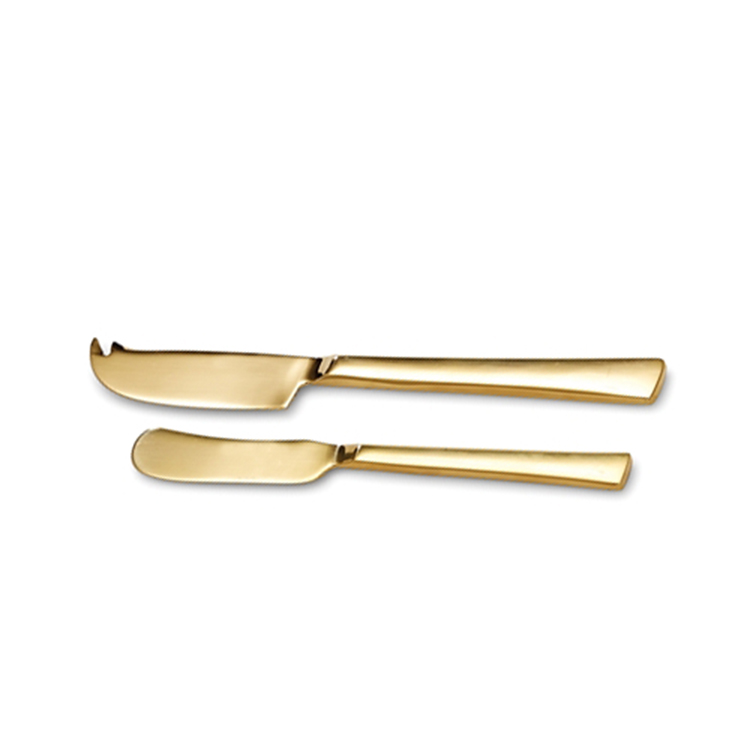Views: 290 Author: Site Editor Publish Time: 2025-11-18 Origin: Site











Content Menu
● Understanding the Cheese Cleaver
● Types of Cheese Suitable for a Cheese Cleaver
>>> Examples of Semi-Hard Cheeses:
>> Step 1: Choose the Right Cheese
>> Step 2: Position the Cheese
>> Step 3: Cut with Confidence
● Caring for Your Cheese Cleaver
● Creative Ways to Use a Cheese Cleaver
A cheese cleaver is designed specifically for cutting hard and semi-hard cheeses. Its wide, flat blade allows for easy slicing and cubing, making it an essential tool for any cheese lover. Unlike other cheese knives, the cleaver's design enables it to handle the density of harder cheeses without bending or breaking.
- Wide Blade: The broad surface area allows for efficient cutting and serving.
- Sturdy Handle: A comfortable grip is essential for applying the necessary force when cutting through hard cheeses.
- Durable Material: Most cheese cleavers are made from stainless steel or high-carbon steel, ensuring longevity and sharpness.
Hard cheeses are the primary candidates for cutting with a cheese cleaver. These cheeses are dense and require a sturdy knife to slice through them effectively.
- Parmesan: Known for its granular texture, Parmesan is best cut into small chunks or shavings. The cheese cleaver can easily break off pieces without crumbling the cheese.
- Pecorino: Similar to Parmesan, Pecorino is a hard cheese that benefits from the cleaver's ability to chip away at its firm texture.
- Aged Gouda: This cheese becomes harder as it ages, making it ideal for cutting with a cleaver.
Semi-hard cheeses are also well-suited for a cheese cleaver. These cheeses have a firmer texture than soft cheeses but are not as dense as hard cheeses.
- Cheddar: A classic cheese that comes in various ages, Cheddar can be easily sliced or cubed with a cleaver.
- Gruyère: This Swiss cheese is known for its nutty flavor and is perfect for melting or slicing.
- Fontina: A semi-soft cheese that can be cut into wedges or cubes, making it great for cheese boards.
Blue cheeses, known for their distinct flavor and texture, can also be cut with a cheese cleaver. The cleaver's sturdy blade can handle the crumbly nature of these cheeses.
- Gorgonzola: This Italian blue cheese can be sliced or crumbled, and the cleaver makes it easy to manage.
- Roquefort: A French blue cheese that is rich and tangy, it can be cut into wedges or crumbled for salads.
Firm cheeses are another category that works well with a cheese cleaver. These cheeses are not as hard as aged varieties but still require a sturdy knife for cutting.
- Havarti: This Danish cheese is semi-soft but can be cut into slices or cubes with a cleaver.
- Monterey Jack: A versatile cheese that can be used in various dishes, it can be easily sliced with a cleaver.
Using a cheese cleaver is straightforward, but there are some techniques to ensure you get the best results:
Select a cheese that is suitable for your cleaver. Hard and semi-hard cheeses are the best options.
Place the cheese on a stable cutting board. Ensure it is secure to prevent slipping while cutting.
Using a firm grip on the handle, apply even pressure as you slice through the cheese. For larger blocks, you may need to rock the cleaver back and forth to achieve clean cuts.
Once cut, arrange the cheese on a platter with accompaniments like crackers, fruits, and nuts for a delightful cheese board.
To maintain the quality and longevity of your cheese cleaver, follow these care tips:
- Hand Wash Only: Avoid putting your cleaver in the dishwasher. Instead, wash it by hand with warm, soapy water.
- Dry Immediately: After washing, dry the cleaver thoroughly to prevent rusting.
- Sharpen Regularly: Keep the blade sharp for optimal performance. Use a whetstone or a professional sharpening service as needed.
Beyond cutting cheese, a cheese cleaver can be used in various culinary applications:
The wide blade is perfect for chopping fresh herbs quickly and efficiently.
Use the cleaver to slice cured meats, making it a versatile tool for charcuterie boards.
The sturdy blade can also be used for cutting vegetables, especially when preparing a cheese and veggie platter.
A cheese cleaver is an indispensable tool for any cheese enthusiast. Its design and functionality make it perfect for cutting a variety of cheeses, enhancing your cheese-tasting experience. By understanding how to use and care for your cleaver, you can enjoy delicious cheese creations for years to come.

1. What types of cheese can I cut with a cheese cleaver?
- Hard and semi-hard cheeses like Parmesan, Cheddar, and Gouda are ideal for cutting with a cheese cleaver.
2. How do I clean my cheese cleaver?
- Hand wash with warm, soapy water and dry immediately to prevent rust.
3. Can I use a cheese cleaver for other foods?
- Yes, cheese cleavers can also chop herbs, slice charcuterie, and prepare vegetables.
4. How often should I sharpen my cheese cleaver?
- Sharpen as needed, depending on usage. A sharp blade is essential for clean cuts.
5. What is the best material for a cheese cleaver?
- High-quality stainless steel or carbon steel is recommended for durability and sharpness.